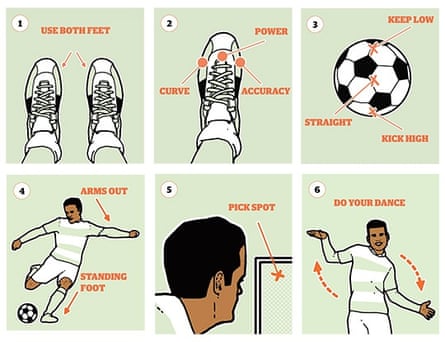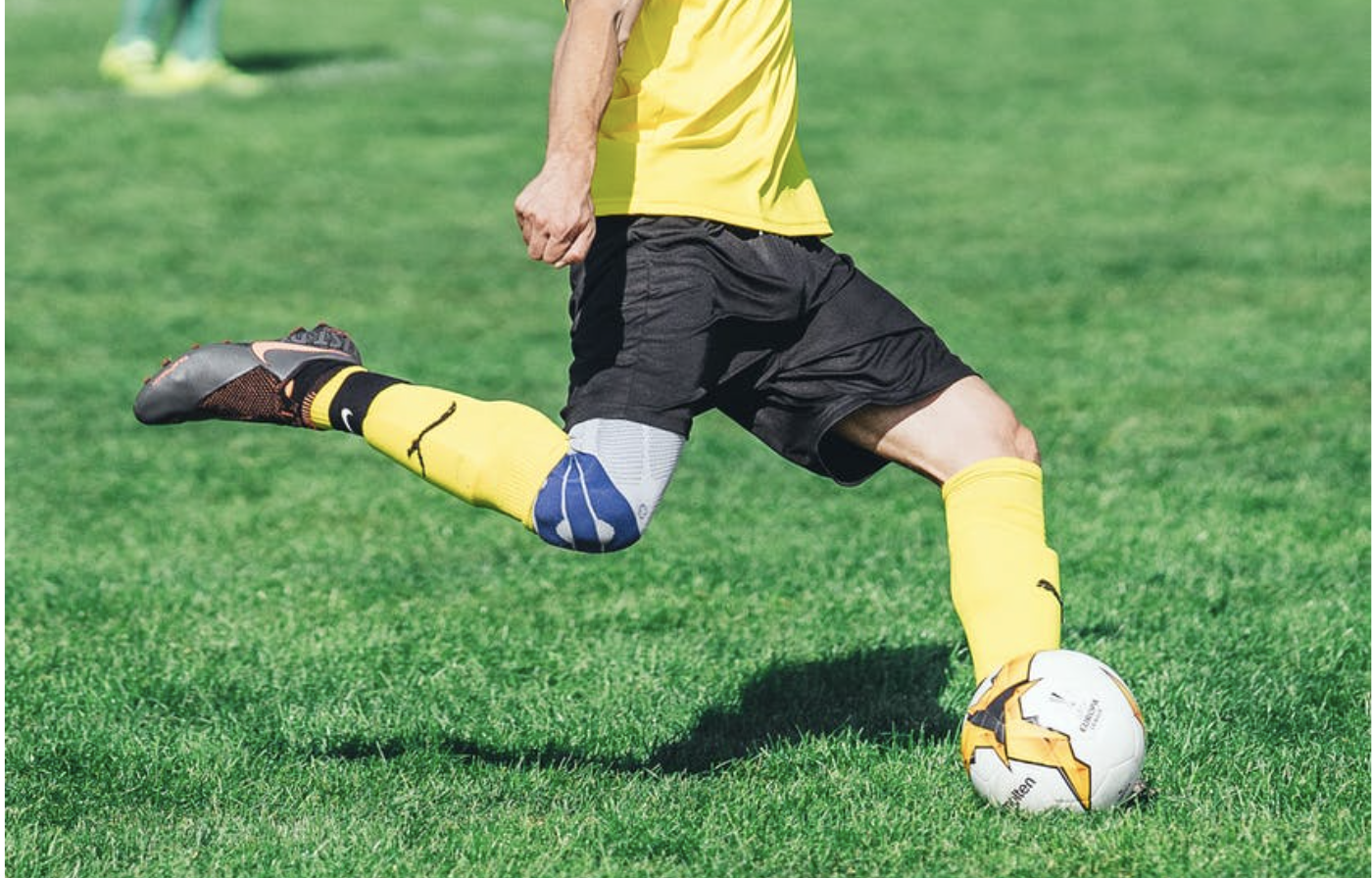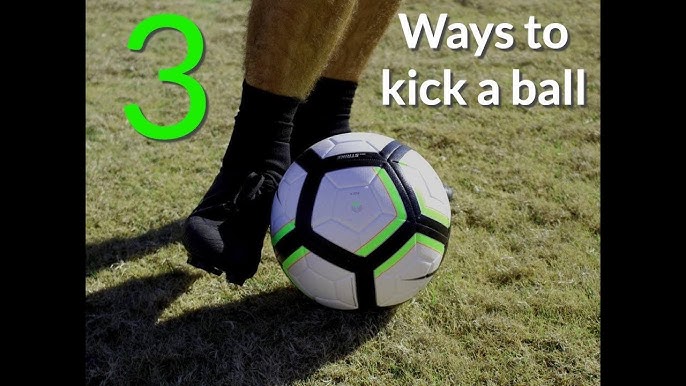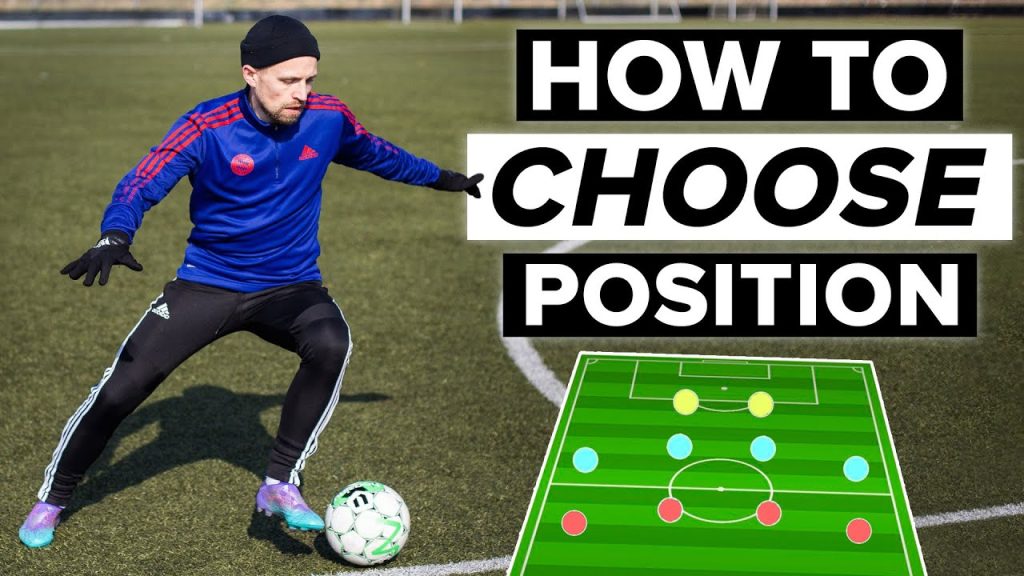Kicking a soccer ball is a fundamental skill in soccer. It might seem simple, but there are key techniques to master.
Learning how to kick a soccer ball correctly can improve your game significantly. Whether you’re a beginner or looking to refine your skills, understanding the right techniques is essential. Proper kicking can enhance your accuracy, power, and overall performance on the field.
This guide will walk you through the steps to kick a soccer ball effectively. By the end, you’ll have the confidence to execute different types of kicks with precision and control. Let’s get started and boost your soccer skills!
Choosing The Right Soccer Ball
Choosing the right soccer ball can make a big difference in your game. It affects your control, kicking accuracy, and overall enjoyment. Let’s explore the factors to consider.
Ball Size And Weight
Soccer balls come in different sizes and weights. This depends on the age and skill level of the player. Here’s a quick guide:
| Size | Age Group | Weight |
|---|---|---|
| Size 1 | All ages | 200-205g |
| Size 3 | 8 and under | 300-320g |
| Size 4 | 8-12 | 350-370g |
| Size 5 | 12 and up | 410-450g |
Choose the right size and weight for the best practice. It enhances your skills and reduces the risk of injury.
Materials And Construction
The material and construction of the soccer ball affect its performance. Most soccer balls are made from either PVC, PU, or leather.
- PVC: Durable and affordable. Good for beginners.
- PU: Softer and offers better control. Ideal for intermediate players.
- Leather: Traditional but less common now. Offers great feel but absorbs water.
Also, consider the construction type. There are two main types:
- Machine-stitched: More affordable. Ideal for casual play.
- Hand-stitched: Higher quality and durability. Best for serious players.
Pick a ball that matches your playing style and level.
Preparing For The Kick
Before you kick a soccer ball, it is important to prepare well. This ensures a powerful and accurate kick. Proper preparation involves wearing the right footwear and doing warm-up exercises. These steps can help prevent injuries and improve performance.
Proper Footwear
Wearing the right shoes is crucial for a good kick. Soccer shoes, also called cleats, offer support and grip. They help you control the ball better. Choose cleats that fit well. Too tight or too loose can cause problems. Look for shoes made of quality material. This ensures durability and comfort.
| Feature | Benefit |
|---|---|
| Good Fit | Prevents blisters and injuries |
| Quality Material | Durable and comfortable |
| Proper Grip | Better control and traction |
Warm-up Exercises
Warm-up exercises are key to avoiding injuries. They also improve flexibility. Start with light jogging. This increases your heart rate. Follow with dynamic stretches. These include leg swings and lunges. Focus on your legs. They do most of the work in soccer.
- Jogging: 5-10 minutes at a slow pace.
- Leg Swings: Swing each leg forward and backward. Repeat 10 times.
- Lunges: Step forward with one leg. Lower your body. Repeat 10 times each leg.
These exercises prepare your muscles for action. They also reduce the risk of strains. Always take time to warm up. It makes a big difference in your performance.
Basic Kicking Techniques
Learning how to kick a soccer ball properly is essential for any player. Mastering basic kicking techniques can improve your accuracy, power, and control. Let’s explore two fundamental methods: the Instep Drive and the Inside of the Foot.
Instep Drive
The Instep Drive is a powerful kick used for long passes and shots on goal.
- Position the non-kicking foot beside the ball.
- Point your toes down and lock your ankle.
- Strike the ball with the top of your foot, where the laces are.
- Follow through to guide the ball accurately.
This technique generates significant power. Practice regularly for better control.
Inside Of The Foot
The Inside of the Foot technique is ideal for short, accurate passes.
- Place the non-kicking foot next to the ball.
- Turn your kicking foot outward.
- Strike the center of the ball with the inner part of your foot.
- Maintain balance and follow through for precision.
This kick emphasizes accuracy over power. It is essential for quick, precise passes.
Advanced Kicking Techniques
Mastering advanced kicking techniques can elevate your soccer game. These techniques require precision and practice. Let’s explore two key methods: curving the ball and chipping the ball. Both add versatility to your skill set.
Curving The Ball
Curving the ball adds a dynamic edge to your play. This technique bends the ball’s path. To curve the ball, strike it with the inside or outside of your foot. Aim to hit the ball off-center. This creates spin. Follow through towards the direction you want the ball to curve. Keep your body balanced. Watch the ball’s movement and adjust your technique. Practice helps perfect this skill.
Chipping The Ball
Chipping the ball is useful for passing over defenders. It involves lifting the ball with a quick, short motion. Use the front part of your foot. Approach the ball with a slight angle. Lean back slightly. Strike the lower part of the ball. Use a quick, snapping motion. This lifts the ball gently into the air. Perfect for passing to teammates or clearing obstacles. Consistent practice improves accuracy and control.
Improving Accuracy
Improving accuracy in soccer means hitting your target each time. Whether you’re passing or shooting, knowing where to aim and how to practice can make a big difference. Focus on the right aiming points and practice drills to enhance your skills.
Aiming Points
To improve your accuracy, always aim for specific points. For a pass, aim for your teammate’s feet or the space in front of them. If you’re aiming for the goal, look for the corners. These spots are harder for the goalkeeper to reach.
| Aim | Target |
|---|---|
| Pass | Teammate’s Feet |
| Shot | Goal Corners |
Practice Drills
Practice is key to improving your accuracy. Here are some simple drills:
- Set up cones as targets. Try to hit them with your passes.
- Shoot at specific spots in the goal. Use markers to show where to aim.
- Play a game of “one-touch pass” with a friend. Focus on hitting their feet.
Repeat these drills often. Consistency helps you get better. Keep track of your progress. Celebrate small wins.
Remember, practice makes perfect. Use these tips to improve your soccer accuracy. Happy practicing!

Credit: www.youtube.com
Increasing Power
To kick a soccer ball with more power, you need more than just technique. You must work on your leg strength and body mechanics. This section will help you understand how to increase power in your kicks.
Leg Strengthening Exercises
Strong legs are essential for powerful kicks. Here are some exercises to help you build strength:
- Squats: Stand with your feet shoulder-width apart. Lower your body by bending your knees. Keep your back straight. Return to the starting position. Repeat 10-15 times.
- Lunges: Step forward with one foot. Lower your body until both knees are at 90 degrees. Push back to the starting position. Repeat with the other leg. Do 10-15 reps per leg.
- Leg Press: Use a leg press machine at the gym. Adjust the weight to a comfortable level. Push the weight with your legs until they are almost straight. Lower the weight back slowly.
- Calf Raises: Stand on a step with your heels hanging off. Raise your heels as high as possible. Lower them back down slowly. Repeat 15-20 times.
Proper Body Mechanics
Understanding body mechanics is crucial for powerful kicks. Here are some tips:
- Position Your Body: Stand slightly behind the ball. Your non-kicking foot should be beside the ball. Keep your body leaning slightly forward.
- Use Your Arms: Swing your arms naturally to maintain balance.
- Follow Through: After making contact with the ball, follow through with your kicking leg. This adds power and direction to your kick.
Remember, practice these techniques regularly. Over time, you will notice an increase in your kicking power.
Common Mistakes To Avoid
Avoid common mistakes like kicking with your toe, improper foot placement, or failing to follow through. Focus on using the inside of your foot for better control. Practice aiming at a specific target to improve accuracy.
Kicking a soccer ball correctly requires practice and attention to detail. Many beginners struggle due to common mistakes. Avoiding these errors can improve your game and prevent injuries. Let’s look at some key areas where mistakes often happen.Incorrect Foot Position
Incorrect foot position leads to inaccurate kicks. Place your non-kicking foot beside the ball. Point your toes towards your target. Your kicking foot should strike the ball with the instep. A wrong foot position often results in weak or misdirected shots. Practice proper foot placement to improve your accuracy.Poor Timing
Poor timing can disrupt your kick. Many players rush their kicks. They don’t give enough time for setup. This can lead to missed opportunities. Practice timing your approach. Ensure your body and foot are in sync. Take your time to align your shot. Proper timing leads to more powerful and accurate kicks. “`
Credit: www.theguardian.com
Training And Practice Tips
Training and practice are crucial for improving your soccer ball kicking skills. Consistent practice helps you build muscle memory. Using training aids can enhance your technique and accuracy. Here are some practical tips to get you started.
Consistency In Practice
Consistency is key in mastering any skill. Practice kicking the ball daily. Set aside a specific time each day for this. Focus on your form. Take note of your stance and follow-through. Keep your non-kicking foot beside the ball.
Start with short, controlled kicks. Gradually increase the distance as you improve. Record your practice sessions. Review them to identify areas needing improvement. Consistency builds muscle memory. This makes your kicks more accurate and powerful.
Using Training Aids
Training aids can help you improve faster. Use cones to set up dribbling drills. Place them in a straight line or random pattern. This improves your control and precision. Practice kicking against a wall. Mark a target spot on the wall. Aim to hit the target with each kick.
Consider using a rebounder net. This helps you practice receiving and passing. It also improves your reaction time. Weighted training balls can increase your strength. They help you build the muscles needed for powerful kicks. Always warm up before using these aids. This prevents injuries and improves performance.

Credit: www.gearssports.com
Frequently Asked Questions
What Is The Best Way To Kick A Soccer Ball?
The best way to kick a soccer ball is by using the inside of your foot. Position your non-kicking foot beside the ball. Follow through with a smooth motion for accuracy.
How Do You Kick A Soccer Ball Harder?
To kick a soccer ball harder, focus on your leg strength and technique. Use your instep (laces) for power. Maintain balance and follow through with your kick.
How Do You Improve Your Soccer Kick Accuracy?
Improve soccer kick accuracy by practicing regularly. Aim for specific targets and use the inside of your foot. Keep your eyes on the ball and follow through.
What Part Of The Foot To Use For Kicking?
Use the inside of your foot for control and accuracy. For power, use the instep (laces). Different parts of the foot suit different types of kicks.
Conclusion
Kicking a soccer ball well takes practice and focus. Start with the basics. Pay attention to your foot position. Use the inside of your foot for control. The laces help with powerful shots. Always keep your eye on the ball.
Practice regularly to improve your skills. Remember, consistency is key. With time, you will see progress. Enjoy the game and have fun. Soccer is about teamwork and passion. So, get out there and play!


